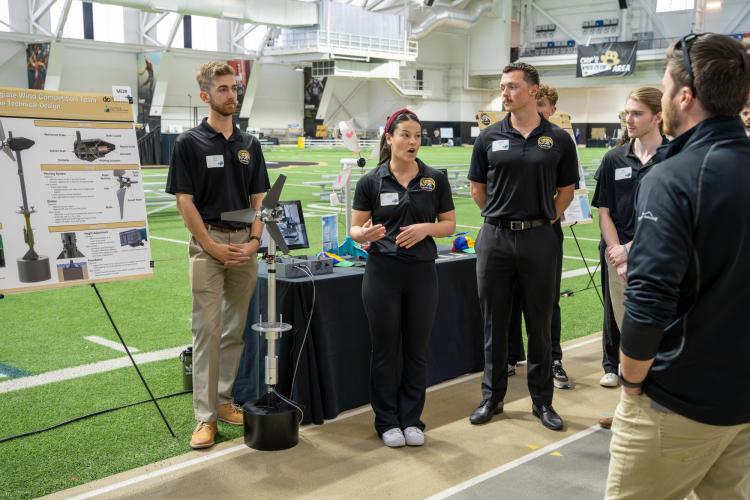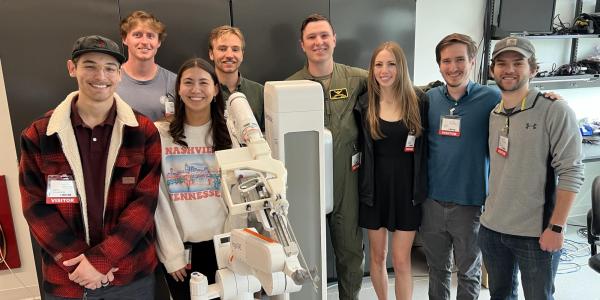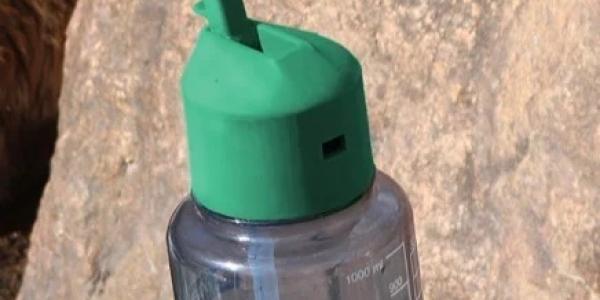


The CU Boulder Wind Team recently competed in the 10th annual Collegiate Wind Competition, rising above 30 other university teams from across the country to come in second place overall.
Put on by the U.S. Department of Energy, the Collegiate Wind Competition prepares college students to enter the wind and renewable energy workforce through real-world experiences in wind energy technology, project development and outreach.
Few expected that the CU Boulder Wind Team would distinguish themselves this year, since they just started entering the competition last year.
“We were the underdogs going into it,” said Project Manager Jeremiah Pare, “but our team was super dedicated and wanted to succeed.”
The competition focuses on three main sections. The first section has two contests that score a team’s ability to design a unique prototype for a wind turbine, while also judging its performance by using an on-site wind tunnel. The second section is the Project Development Contest that scores a team’s site plan and financial analysis for a hypothetical wind farm. The final section judges a team’s efforts in promoting their project to the wider public.
The CU Boulder Wind Team’s first initiative was to improve upon last year’s wind turbine design. After speaking with last year’s team members, analyzing their final reports and consulting with industry professionals, a top priority for the team was to improve blade performance.
Test Engineer Amanda Shields helped research the ideal airfoil, which is the design of the blade’s surface that generates aerodynamic force when interacting with a moving stream of air.
“After talking with some blade design engineers, they helped me settle on a certain thickness, length and twist of the airfoil that will generate the right amount of lift for 50 mph winds,” Shields said.
Another consideration was upgrading the active pitching system of the wind turbine, which monitors and adjusts the angle of the blades according to the wind’s direction and shuts down the turbine if the wind is too strong. The team decided to use an original mechanical design to adjust them, along with an optimized controls system. For the emergency stop function, the team designed a triple redundancy system that would short the generator, pitch the blades at a negative angle and activate a brake.
The team also added an anemometer, which used wind speed as an input to control the pitching of the blades and maximize power output.
Their design impressed at the competition.
“When we were presenting our design and testing its performance, you could feel a shift,” Pare said. “Everyone there was like, ‘Oh, they came to show.’”
For the second section of the competition, Logistics Manager Lauren Mullen led the project development for the team’s hypothetical wind farm in the Gulf of Mexico, south of Louisiana. Along with a core group of other environmental engineers on the team, Mullen did research to assess the potential ecological, economic and social impacts of the construction and commission of the wind farm. Ultimately, the team proposed a $30 million bid for 30,000 acres of land that was 66 kilometers from the shore and would generate 380 megawatts of electricity.
“It was like industry boot camp,” said Mullen, “working with a team of engineers on a large project, learning on your own and getting it done on time.”
Pare, who is a mechanical engineering major, enjoyed working with environmental engineers like Mullen.
“The cool thing about working on the CU Boulder Wind Team is that it’s so interdisciplinary,” he said. “We have environmental engineers, electrical engineers, civil engineers and mechanical engineers. It’s more of a real-world experience in that way, rather than just working with engineers within your major.”
For the third section of the Collegiate Wind Competition, called Connection Creation, the team hustled to get the word out about wind energy. This included increasing undergraduate student awareness by hosting fairs and attending expos, growing the CU Boulder Wind Team’s social media presence and educating K-12 students about the future of wind energy.
“Visiting elementary schools and putting on events was the most fun part of the experience,” Financial Manager Ariana Carmody said. “A lot of the kids said they wanted to be engineers after talking with us, so it felt like what we were doing had a tangible effect on them.”
Also, the CU Boulder Wind Team founded the CU Wind Club on campus and have generated excitement among underclassmen in joining the team for next year. The underclassmen currently part of the club include business and finance majors.
The team said they were proud of their accomplishments and the impact they’ve made in transforming CU Boulder into a hub for students excited about studying wind and other renewable energies.
“It was huge to have the opportunity to get hands-on experience with designing a wind-turbine,” Shields said. “The project development and learning how to talk to different audiences while doing outreach was super valuable too.”
Mullen agreed. “This whole experience was the most impactful work I’ve done in my undergraduate career,” she said.



